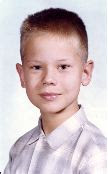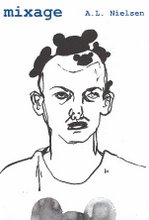Friday, May 31, 2013
Twenty Years of the African American Literature and Culture Society
[This is the retrospective talk I gave in Boston on a panel observing the AALCS twentieth anniversary.]
“In the last of the small hours,” so begins Aimé Césaire’s Notebook of a Return to My Native Land; so began the African American Literature and Culture Society, a society long accustomed to rising early, meeting for business as night give son to day. Much has changed, but we still find ourselves meeting early. We no longer have the coffee and pastries with which Wilfred Samuels seduced us in the early hours of the early years; we run on fumes and ambition.
There was no African American Literature and Culture Society on the last day of May 1990 when the American Literature Association met for the first time as a full-fledged conference, at the Bahia Hotel in San Diego. The conference programs are one measure of the passing of time. Their format remains virtually unchanged over the years, though the paper stock on which the cover is printed has changed. This year’s program, for what is either the ALA ‘s twenty-second or twenty-fourth conference depending on whether you believe the program’s cover or its interior and your own memory, is seventy-eight pages of conference information, in contrast to the nineteen pages of the first. From the outset, the ALA announced itself as “a coalition of societies devoted to the study of American authors,” though at that first conference there was but one African American author society participating in that coalition, the Langston Hughes Society, still with us in the twenty-second or twenty-fourth year. We shouldn’t make too much of the slight representation in 1990, for there were very few societies organized around individual black authors at the time. The Zora Neale Hurston Society had just been formed four years earlier. The Richard Wright Circle was already going strong, the C.L.R. James Society was about to be created, but there were precious few such groups at the time, and we had not yet begun forming societies around living artists, though that would come soon. Since 1999 there has even been a Sonia Sanchez Literary Review. I only recently learned that there had already been a Charles W. Chesnutt Literary Society when ALA first met, though that society is not to be confused with the Charles Chesnutt Association which organizes panels at ALA. “Is not to be confused,” – I fear confusion is inevitable; both groups have FaceBook pages.
Still, despite the presence of only one black author society, African American literary arts were addressed. In addition to the Hughes Society, MELUS was a founding member of the ALA coalition, and that first conference on San Diego hosted a significant showing of scholarship in the field. The first afternoon featured a panel on the slave narrative chaired by J. Lee Greene with presenters Herman Beavers, our own Mary Kemp Davis, and John Sekora, who, as it happens, had served as the outside member of my dissertation committee five years earlier. That was followed immediately by a session on Southern Black Writing featuring Thadious Davis, R. Baxter Miller and Jerry Ward, who would no doubt be with us today were it not for the fact that he is in China. Even panels not exclusively devoted to black writers often included African American authors. An Early American session included a paper titled “The Economy of Equiano’s Words between Worlds” by Joseph Fichtelberg, who had just joined the faculty at Hofstra, and an autobiography panel presented a paper that was partly addressed to the work of Hurston. A canon and gender session included a Dorothy West paper. The Friday afternoon sessions included a two person panel on Textual Scholarship and Afro-American authors, where Julian Mason spoke on editing Phillis Wheatley and James Robert Payne introduced me to the poetry of Joseph Semon Cotter, Jr. Kenneth Kinnamon organized a Richard Wright panel that included the late Donald Gibson, whose sports journalist nephew showed up to hang out with us at the café. Also on that panel were Kenny Williams and future AALCS award recipient Maryemma Graham. Saturday afternoon it was Hughes time, with a panel made up of Dolan Hubbard, then still at the University of Tennessee, Amritjit Singh and Leslie Sanders. Perhaps the conference highlight for me was a late Saturday afternoon panel titled “Lyrics of Race and Gender: Contemporary Black Women’s Poetry.” Chaired by Elizabeth Hanson, that panel began with readings by Sherley Anne Williams, then on the faculty of U.C. San Diego, and Elizabeth Alexander, who read from her Venus Hottentot project. The two poets were followed by a critical study of Audre Lorde offered by Marcellus Blunt, who seemed not the least troubled by the fact that one of the sleeves of his jacket was tearing loose from the torso. I had brought with me a primitive Radio Shack recorder and still have the hissing tape I made of that session.
My own first ALA paper was on the work of Carla Harryman and was a discussion of citation, use and sampling in contemporary poetics. For my sins I was consigned to a two person, lunch hour panel, with the anticipated effect on audience size. But it was there that I met Alan Golding, my fellow poetics panelist and a friend ever since, who turned out to have studied briefly with Jerry Ward.
The final afternoon time slot (the conference did not then extend into Sunday as it now does) brought us the MELUS panel with papers on Cullen, Hughes and McKay. For those keeping track, just a bit under 6% of the first year’s panels were devoted to African American literature. Throw in the occasional paper on related panels and you might get as high as 6.5 %. Bear in mind that the first ALA conference took place at the height of the poorly named “culture wars,” witness the presence of a panel on “Teaching a Reconstructed American Literature.” Which is to say that even as the reconstruction of the canon was at hand, nearly two decades after the Black Arts Movement spurred a rethinking of pedagogy throughout the nation, African American Literature remained, to use the terms of academic administrators, and under-represented minority in the curriculum. Under those circumstances, the high quality of the presentations in 1990 should be remarked – Some of our finest scholars were on the scene in San Diego that year.
But more was clearly needed, and it wasn’t long before our visionary first president, Wilfred Samuels, began pulling people together at subsequent ALA conferences to discuss the formation of a new society. There was a lot of that going on in the interstices of those early conferences. Some of the societies formed for women poets grew out of conversations in San Diego, D.C. and Baltimore, and I still remember sitting at the outdoor tables at the Bahia and talking over the need for a modernism studies association. That association is about to hold its fifteenth conference, and readers of its journal and conference programs will quickly see that pressure of the type brought to bear by the existence within ALA of the African American Literature and Culture Society is much needed within the MSA, which may be the only conference I’ve attended that is whiter than the Society for the Study of Southern Literature. SO, early in the evolution of ALA the need for a consistent, organized voice for black writing was apparent and the formation of the AALCS was the launching pad for all that followed. We can track the success of our efforts by the lengthening list of co-sponsors of our annual awards ceremony and reception. We have been joined by the Chesnutt Association, the Dunbar Society, the Hopkins Society, the Charles Johnson Society, the Ellison Society, the Toni Morrison Society (whose own early receptions were greatly enhanced by Morrison’s well-timed receipt of the Nobel Prize) and the John Edgar Wideman Society. While some observed an aesthetically conservative core in the early ALA, many of us realized that the coalition structure made it possible for us to do a great deal of more challenging work not only around the edges of ALA but at its heart. Further, the AALCS has been a champion for broadening ALA’s focus beyond those black writers for whom societies have been formed. We have often served as a clearing house for papers on African American subjects submitted for ALA, and we have increasingly instigated new modes and areas of research with those panels we organize through our organization’s calls for papers. The Stephen Henderson Award, to be presented this year to Michael S. Harper, has only increased in prestige over the years. The list of artists who have received our award has achieved such stature that recipients are proud to have been selected and feature it prominently among their achievements. Since we are reflecting as well as following Jameson’s advice always to historicize, let me add to this record an acknowledgment of the smaller list of scholars who have won our Darwin Turner Award. Even if we confine our considerations to scholars who will be in attendance at ALA, or who live near the convention city, I believe we can probably select future candidates for that award who will live up to the high standard set by such previous recipients as Jerry Ward, or, for that matter, of Darwin Turner himself.
Whether we are in our 22nd or our 24th year at ALA, many of us in AALCS have been here for the very long haul. We are now seeing a new generation of scholars step forward to take us to the 23d or the 25th ALA and beyond. And when they do, I’ll be there in the audience with my camera and recorder, so they’d better keep up the spirit of Wilfred Samuels, Keith Byerman, Loretta Woodard. and the many (they’re not retired yet so let’s just call them) brothers and sisters who brought us here.
Subscribe to:
Post Comments (Atom)





















No comments:
Post a Comment